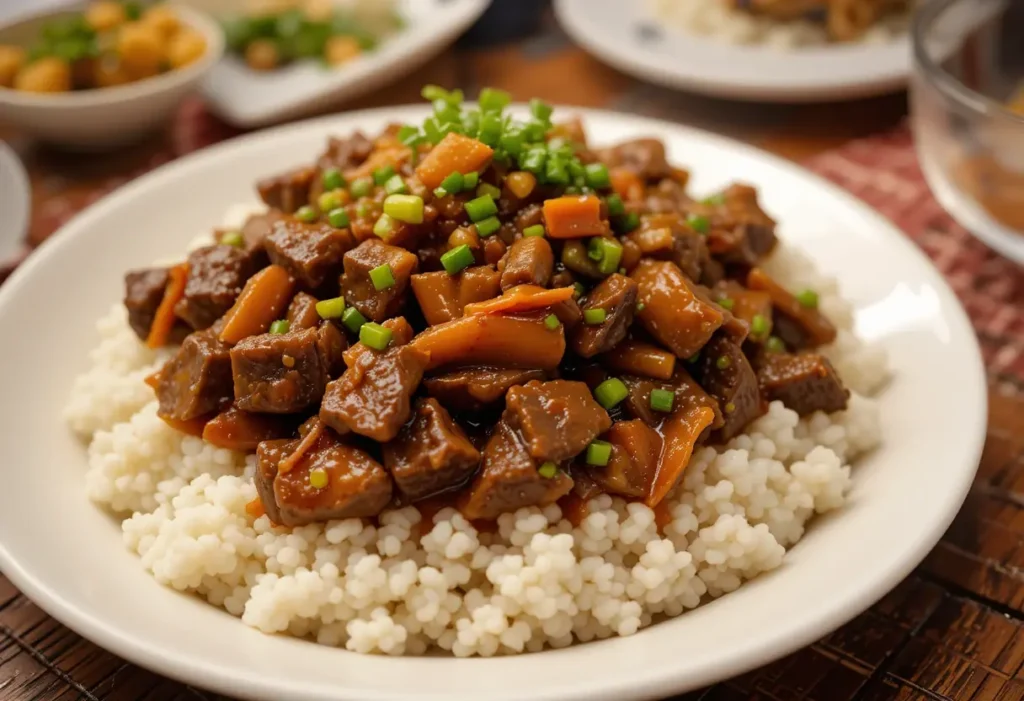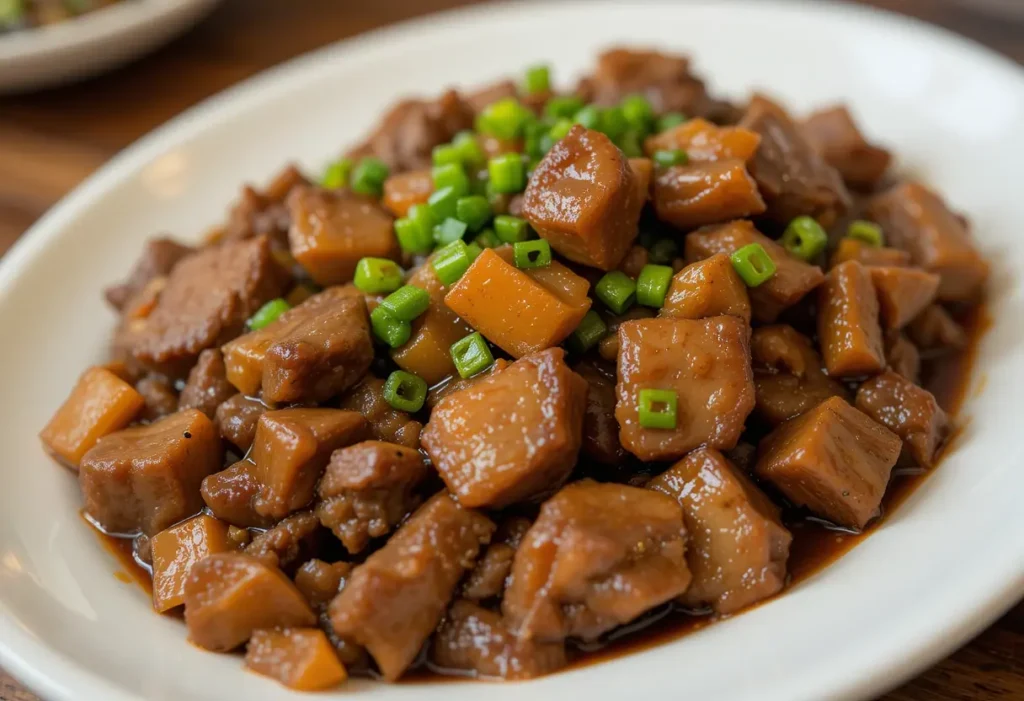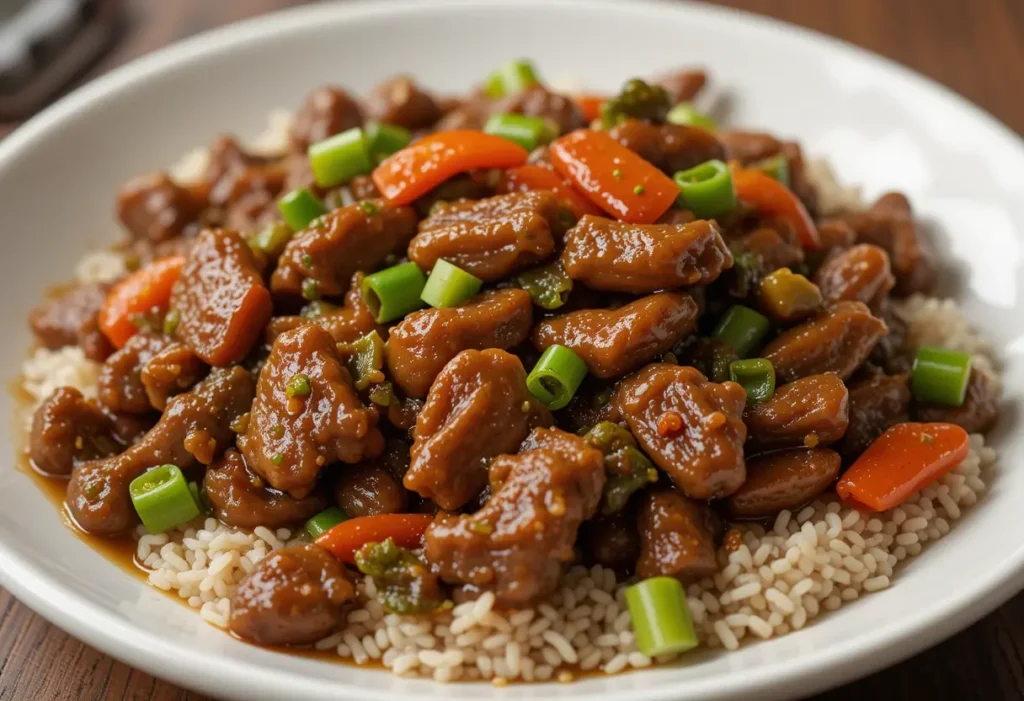Mongolian beef is a popular, savory dish in American Chinese cuisine, celebrated for its Who Invented Mongolian Beef?
Mongolian beef is a popular, savory dish in American Chinese cuisine. It’s celebrated for its tender beef slices and flavorful, sweet-savory sauce. Despite its name, Mongolian beef doesn’t originate from Mongolia. Taiwanese chefs created it, influenced by the Mongolian barbecue style. Over time, it became a mainstay in Chinese-American restaurants across the U.S. Let’s explore the origins, features, and fascinating history behind Mongolian beef.
What is Mongolian Beef?
Mongolian beef consists of thinly sliced flank steak cooked in a sweet and savory sauce. The sauce usually includes soy sauce, hoisin sauce, and sugar, creating a rich and aromatic flavor profile. You typically pair it with steamed rice or serve it with crispy noodles.
While its name may evoke images of traditional Mongolian cuisine, the dish shares more with Taiwanese food and Chinese-American adaptations. It’s a perfect example of how culinary creativity can lead to new dishes, even when the name suggests something more traditional. For a deeper look into similar recipes, check out our guide to the Mongolian Beef Noodles.
History and Origins of Mongolian Beef
A Taiwanese Creation
Taiwanese chefs invented Mongolian beef in the 20th century. They created it primarily in Mongolian barbecue restaurants. These restaurants used the Mongolian name to evoke a sense of exoticism, even though the dish had no actual connection to Mongolia. In these restaurants, chefs cooked the beef in a wok, which helped the meat stay juicy and tender while absorbing the sweet and salty flavors of the sauce.
If you want to learn about the origins of other American Chinese dishes, check out our article on Mississippi Chicken.

Why the Name ‘Mongolian’?
The name “Mongolian” was a marketing tactic. It connected the dish to the excitement of Mongolian barbecue, a cooking style that became popular in Taiwan in the 1950s and 1960s. The grilling technique used in Mongolian barbecue involves cooking meat on a large, flat surface, but Mongolian beef is a stir-fry dish that incorporates different techniques and flavors.
Key Features
The Ingredients
- Flank steak: Thinly sliced and perfect for absorbing the sauce.
- Hoisin sauce: Adds a sweet, thick flavor.
- Soy sauce: A key element for umami depth.
- Scallions: Provide a fresh, crispy bite.
- Garlic and ginger: Infuse aromatic heat and fragrance into the dish.
Variations
While the traditional Mongolian beef uses only beef, many restaurants offer variations, like Mongolian lamb. Some add vegetables such as bell peppers and broccoli, while others introduce chili peppers for extra spice. If you enjoy experimenting with new dishes, you might also enjoy variations like Alice Springs Chicken.
Misconceptions About Mongolian Beef
Not Traditional Mongolian Cuisine
Despite the name, Mongol beef isn’t part of traditional Mongolian cuisine. Mongolian dishes typically feature lamb, mutton, and beef, often served with dairy products. Mongol beef, on the other hand, combines influences from Taiwanese and Chinese-American cuisines. If you’re curious about true Mongolian dishes, learn more about Khuushuur and Boodog, which are authentic to Mongolia.
The Influence of Mongolian Barbecue
Though Mongol beef is cooked stir-fry style, the name links it to Mongolian barbecue, which involves grilling meat on a large, circular grill. In these restaurants, diners pick their meat and vegetables, which the chefs cook right in front of them. To dive deeper into Mongolian barbecue, check out our detailed history of Mongolian barbecue.

FAQs About Mongolian Beef
Why is it Called Mongol Beef?
The name “Mongolian” was chosen for marketing purposes. It adds an exotic flair to the dish, even though the recipe has no historical connection to Mongolia.
Is Mongolian Beef Spicy?
Traditional Mongol beef isn’t spicy, but some variations add chili peppers or spices to suit those who enjoy a bit of heat.
Can You Use Other Meats?
Yes, you can substitute other meats like chicken or lamb. However, this will alter the flavor and texture of the dish.
What’s the Difference Between Mongolian Beef and Mongolian Barbecue?
Mongol beef is a stir-fry dish, while Mongolian barbecue refers to a grilling method where ingredients are cooked on a hot grill. Both share culinary influences, but they use different cooking techniques.
Conclusion
Mongol beef remains one of the most popular dishes in American Chinese cuisine. Despite its name, it was born out of Taiwanese culinary innovation and has become a favorite comfort food worldwide. Whether you enjoy it at a restaurant or try making it at home, Mongolian beef delivers a delightful mix of flavors and textures that will please any palate. For those seeking more Asian-inspired dishes, try Mongolian Beef Noodles or create your own variations of this beloved recipe.
Who Invented Mongolian Beef?

